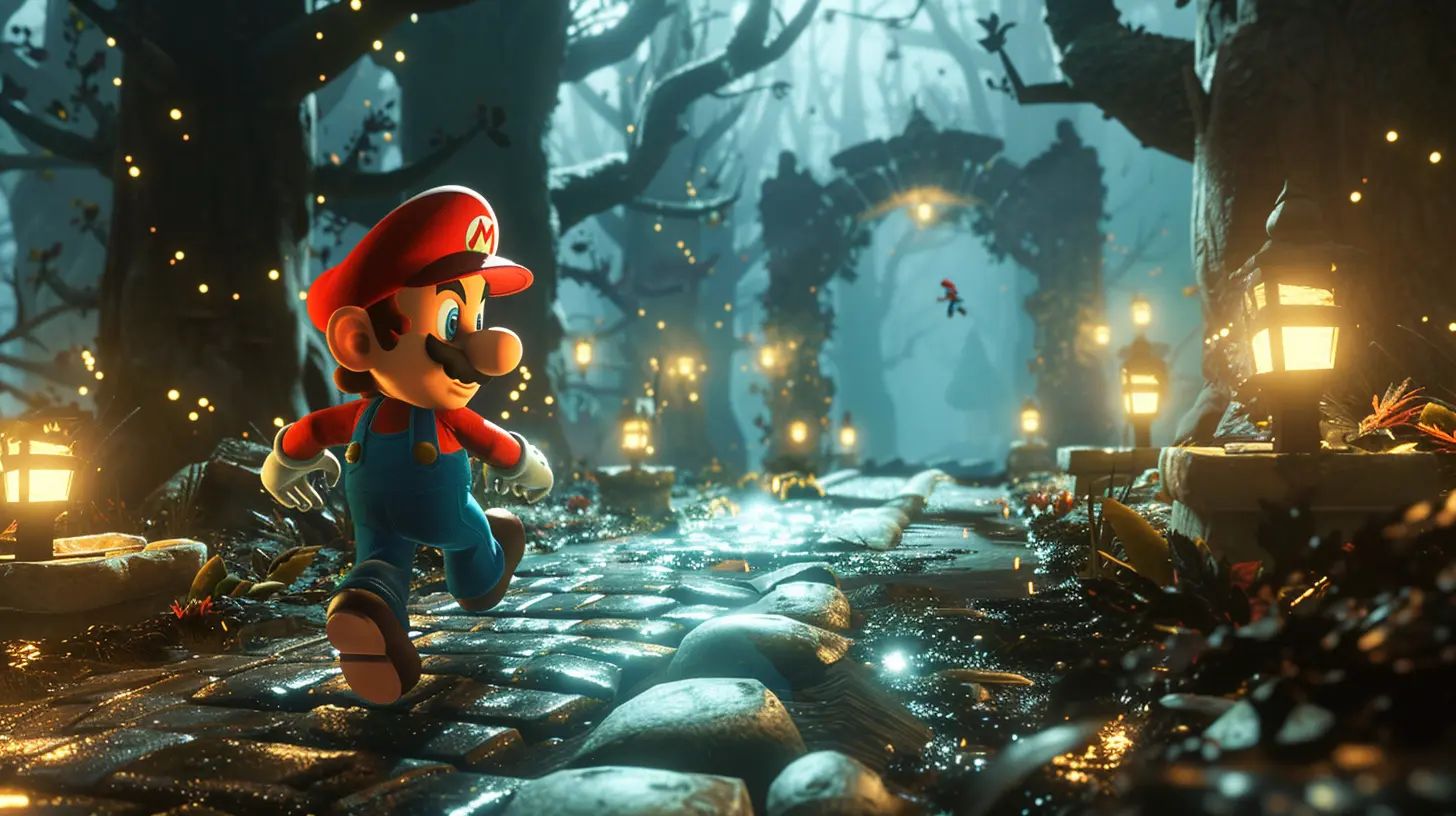How Speedrunners Breathe New Life Into Classic Games
1 July 2025
Gaming in the modern age is nothing short of a spectacle. You’ve got breathtaking graphics, sprawling open worlds, and storylines that rival Hollywood blockbusters. But, let’s take a minute to hit the pause button and rewind. For millions of gamers, the real magic lies in those pixelated classics that introduced us to gaming in the first place. Titles like Super Mario Bros., The Legend of Zelda, and Sonic the Hedgehog still hold a special place in our hearts. But how do these decades-old games remain relevant today? Let me introduce you to an electrifying corner of the gaming universe—speedrunning.
Speedrunners are the unsung heroes who’ve turned nostalgia into an extreme sport. They race against the clock, exploit glitches like mad scientists, and redefine what it means to master a game. And in doing so, they don’t just preserve these classics; they breathe entirely new life into them. Let’s dive into why speedrunning is a phenomenon that’s keeping classic games alive and thriving.
What Is Speedrunning, Anyway?
Before we dive deeper, let’s clear the air for anyone scratching their head. Speedrunning is the art of completing a video game as fast as humanly possible—or sometimes, faster than anyone thought was possible. It’s not just about beating the game; it’s about breaking the game, finding shortcuts, and exploiting mechanics to shave off precious milliseconds.Imagine someone finishing Super Mario 64 in under 15 minutes or completing the notoriously punishing Dark Souls in less time than it takes to binge a single episode of your favorite Netflix show. It sounds insane, right? Yet, that’s exactly what speedrunners do.
The Magic of Rediscovery
When was the last time you popped in your favorite childhood game? For most of us, the nostalgia kicks in, but we tend to keep our playthroughs fairly casual. Speedrunners, however, refuse to play by the rules. Instead, they dig deep—really deep—into the mechanics of these games.Take The Legend of Zelda: Ocarina of Time, a game many consider one of the greatest of all time. While most players wander through Hyrule at their own pace, speedrunners have discovered glitches that let them warp across the map, skip entire dungeons, and finish the game in under 20 minutes. Yes, you read that correctly. In this sense, speedrunners treat classic games like treasure chests, unlocking hidden secrets that casual players never dreamed of.
This process of rediscovery often turns forgotten or overlooked titles into fresh sensations. Speedrunning doesn’t just play a game—it reinvents it.
A Whole New Level of Mastery
Let’s be real: we all like to think we’re pretty good at our favorite game. But speedrunners operate on an entirely different wavelength. They spend hundreds, sometimes thousands, of hours practicing specific segments of a game until they’ve memorized every pixel, glitch, and movement.It’s like watching a virtuoso pianist flawlessly perform a complex concerto. Speedrunners execute strategies with such precision that it feels like you’re witnessing something superhuman. The amount of skill required to consistently perform frame-perfect inputs is absolutely mind-boggling.
Picture yourself trying to sprint through Super Metroid while juggling the equivalent of an encyclopedia’s worth of information in your brain. Oh, and don’t forget—you’re racing against the best players in the world. It’s high-stakes gaming on steroids.
Turning Obscure Titles Into Cult Hits
Here’s where things get even cooler. Speedrunning doesn’t just breathe life into the heavy hitters like Donkey Kong or Final Fantasy. It also shines a spotlight on hidden gems and obscure titles that might otherwise be lost to time.Take Pepsiman, an oddball game that’s essentially a glorified advertisement for Pepsi. Hardly anyone gave it a second glance when it came out. But thanks to speedrunning, Pepsiman has developed a cult following, with players competing to see who can race through its bizarre levels the fastest.
This phenomenon isn’t limited to one-off oddities, either. Speedrunning marathons like Games Done Quick bring niche games to massive audiences, often reviving interest in titles that were previously footnotes in gaming history.
It’s All About Community
One of the most remarkable aspects of speedrunning is its vibrant, welcoming community. Let’s face it—speedrunning is as much about the people as it is about the games. Forums, Reddit threads, and Discord servers buzz with activity as players share tips, tricks, and techniques.There’s something undeniably heartwarming about seeing gamers collaborate like this. Think about it: instead of hoarding their secrets like some greedy dragon guarding treasure, speedrunners openly share their findings. They create guides, upload tutorials, and stream their runs for the world to see.
This sense of community fosters innovation. When one runner discovers a new glitch or trick, others build on it, pushing records further and further. It’s a never-ending cycle of creativity and competition that keeps classic games alive in a way traditional play never could.
Breaking Down Barriers
Speedrunning also has a way of making games feel accessible again. Let’s be real—many classic games are hard. Brutally hard. Just think about how many controllers Contra or Battletoads has sent flying across rooms in frustration.But here’s the twist: watching speedrunners absolutely destroy these games can be inspiring. Sure, you might never master the Mega Man series like the pros do, but seeing someone else do it with such finesse makes the seemingly impossible feel, well, possible. Speedrunners break down the “wall of difficulty” and invite players to give these games another shot.
Speedrunning as Performance Art
At its core, speedrunning is more than just a race against time—it’s a performance. Watching a skilled speedrunner complete a flawless run is like seeing a perfectly choreographed dance. Every jump, every movement, every input is a testament to their dedication and skill.Take Celeste, for instance. It’s a game built around tight platforming and pixel-perfect timing. Watching a speedrunner blaze through its levels is breathtaking, as they pull off tricks and maneuvers that look impossible to the untrained eye.
Speedrunning also thrives on live events. Crowds cheer, hearts race, and every run becomes a spectacle of triumph and heartbreak. It’s not just gaming—it’s pure entertainment.
Keeping Classic Games Relevant
Let’s not overlook the elephant in the room: speedrunning keeps retro games relevant in an industry that’s constantly moving forward. Without communities of passionate players, old titles might fade away into obscurity. But thanks to speedrunners, these classics remain in the spotlight.Even developers have taken notice. Modern games like Celeste and Hollow Knight include features designed with speedrunners in mind. Some developers have even patched old games to make them more accessible to the speedrunning community. How’s that for influence?
Why It Matters
At the end of the day, speedrunning is a love letter to gaming’s past. It proves that no matter how many photorealistic triple-A games come out, there will always be value in those 16-bit gems that started it all. Speedrunners remind us that games aren’t just something to consume and move on from—they’re something to be cherished, explored, and even mastered.So the next time someone brings up Super Mario Bros. or Castlevania, remember this: thanks to speedrunning, those games aren’t just relics—they’re living, breathing works of art that continue to evolve.
all images in this post were generated using AI tools
Category:
SpeedrunningAuthor:

Avril McDowney
Discussion
rate this article
2 comments
Esme Warren
I really appreciate this article! It's inspiring to see how speedrunners breathe new life into classic games, showcasing their depth and intricacies. Their passion and creativity not only honor these titles but also encourage a new generation to explore and enjoy them. Great read!
October 18, 2025 at 3:05 PM

Avril McDowney
Thank you so much for your kind words! I'm thrilled to hear that you found the article inspiring. Speedrunning truly does celebrate the depth of these classic games!
Zylith Spencer
Speedrunners illuminate the depth of classic games, revealing hidden mechanics and strategies that challenge our perceptions. Their dedication transforms nostalgia into a vibrant, evolving community and experience.
July 12, 2025 at 3:14 AM

Avril McDowney
Thank you! Speedrunners truly showcase the intricacies of classic games, turning our nostalgia into an exciting journey of discovery and shared passion.


